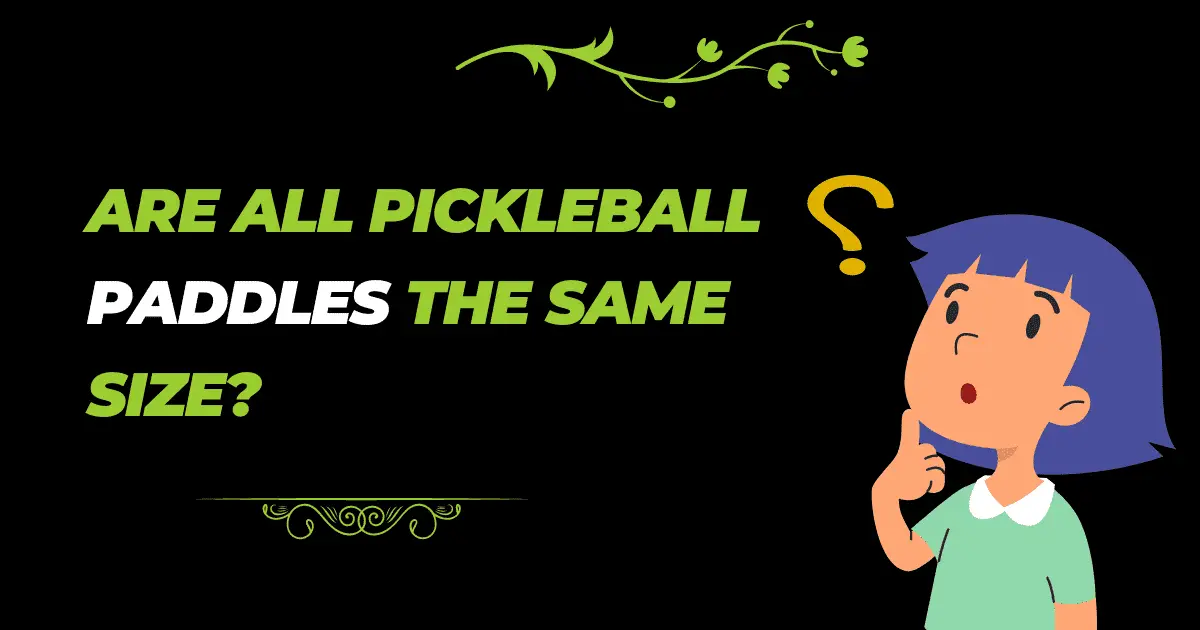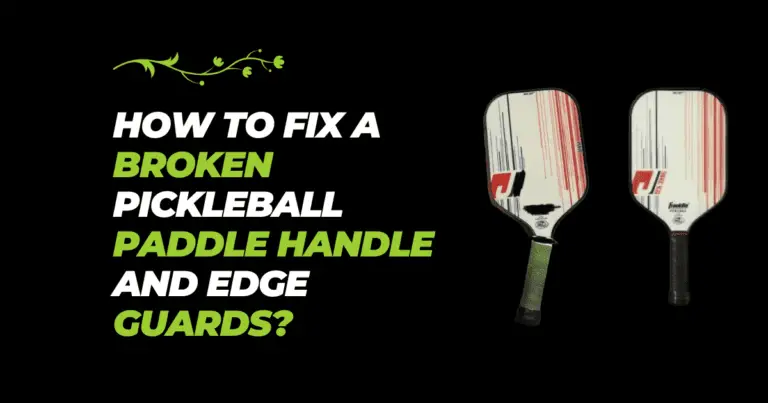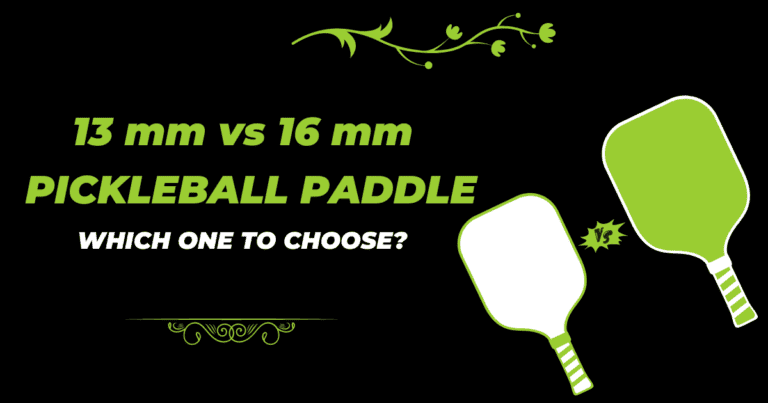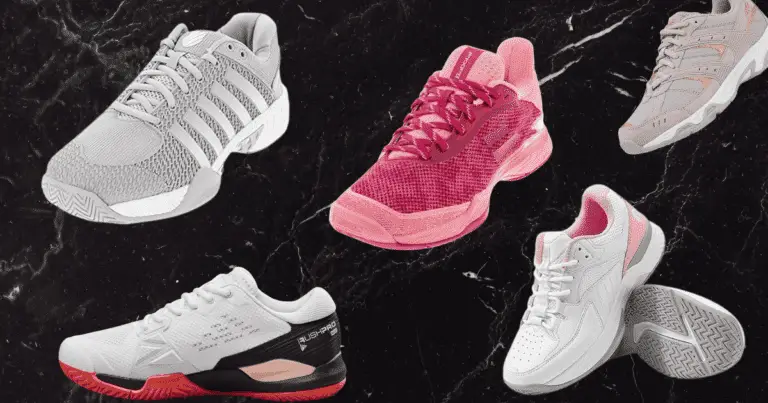Last updated on: August 3, 2023
Have you ever wondered if all pickleball paddles are created equal in size? As the pickleball craze continues to sweep the sports world, the humble paddle takes center stage as the essential tool of the game.
From casual enthusiasts to seasoned competitors, every player seeks that perfect paddle to unleash their best shots on the court. But is there a one-size-fits-all solution, or does the search for pickleball glory require a nuanced approach to paddle dimensions?
In this intriguing exploration, we delve into the world of pickleball paddles to unveil the truth about their size variations, impact on gameplay, and the secrets to finding your ideal fit. Let’s paddle up and dive right in!
Understanding Pickleball Paddles
Before diving into paddle size, it’s crucial to understand what pickleball paddles are and their significance in gameplay.
These paddles are constructed with a combination of materials, usually featuring a composite or polymer face, a core that could be made of materials like polymer or foam, an edge guard for protection, and a comfortable grip to ensure precise handling.
The paddle’s design directly influences a player’s shots and control on the court.
Standard Pickleball Paddle Size
The International Federation of Pickleball (IFP) has laid down strict standards for paddle dimensions to ensure fair gameplay.
According to the official rules, pickleball paddles must have a maximum length of 17 inches, a maximum width of 7 inches, and a total area (length x width) of 118 square inches.
Compliance with these standards ensures that all players have a level playing field.
Paddle Size Variations
While the standard size is essential for official play, players can access a wide array of paddle sizes in the market. Manufacturers offer paddles of varying lengths, widths, and shapes, allowing players to choose the one that best suits their playing style and preferences.
Some paddles may be slightly shorter or wider than the standard, catering to individual player needs and playing techniques.
Advantages of Different Paddle Sizes
The choice between a larger or smaller paddle depends on the player’s style and priorities on the court. Sure! Here are the advantages of different pickleball paddle sizes:
Larger Paddles
- The larger sweet spot for increased power in shots.
- Enhanced reach, making it easier to return balls that are farther away.
- Greater forgiveness for off-center hits, reducing the chances of missed hits.
- Suitable for aggressive players who prefer powerful shots.
Smaller Paddles:
- Improved maneuverability for quick and precise shots.
- Better control over ball placement and direction.
- Ideal for defensive players who prioritize accuracy and placement.
- Reduced weight and size allow for easier handling and faster reaction times.
Medium-sized Paddles:
- Strike a balance between power and control for all-around play.
- Suitable for players who want a versatile paddle adaptable to different playing styles.
- It offers a blend of power on attacking shots and precision on defensive shots.
- Provides an optimal fit for players looking to explore various aspects of their game.
Paddle Size and Age Group
Players of different age groups may have distinct paddle size preferences. Younger players might gravitate toward smaller paddles for better handling, while seniors may find more oversized paddles helpful in generating more power. Veterans may experiment with different paddle sizes to find the one that aligns with their changing playing needs.
Choosing the Right Paddle Size
Here are some tips for choosing the right pickleball paddle size:
- Consider Your Playing Style: Match your style (aggressive or defensive) with the advantages of larger or smaller paddles.
- Assess Your Skill Level: Beginners may benefit from larger paddles, while advanced players may prefer smaller ones.
- Try Different Paddle Sizes: Experiment with various lengths and widths to find the most comfortable fit.
- Check Grip Size: Ensure the paddle’s grip feels comfortable and secure in your hand.
- Seek Expert Advice: Consult experienced players or instructors for personalized recommendations.
- Take Age into Account: Younger players prefer smaller paddles, while seniors opt for larger ones.
- Test Paddles Before Tournaments: Practice with the paddle you plan to use in official competitions to get accustomed to its size and feel.
Common Misconceptions about Paddle Size
Several myths surround paddle size and its influence on gameplay.
Some players mistakenly believe that using an oversized paddle guarantees success, while others think smaller paddles lack power.
Debunking these misconceptions empowers players to make informed decisions based on their playing needs.
Paddle Size Regulations in Tournaments
In official pickleball tournaments, adherence to paddle size regulations is essential. Using an oversized or undersized paddle can lead to disqualification and adversely affect fair play. Players must familiarize themselves with tournament regulations to use paddles within the prescribed dimensions.
Customization Options for Paddle Size
For players seeking a perfect fit, custom-made paddles are a viable option. These paddles are tailored to individual preferences, offering a personalized gaming experience. While custom paddles have advantages, players must weigh the benefits against the cost and availability.
Paddle Material and Its Impact on Size
Paddle materials significantly influence size and weight. Different materials affect the paddle’s feel, power, and control. Understanding the relationship between paddle construction and performance helps players choose the suitable material based on their paddle size preferences.
Caring for Paddles of Different Sizes
Maintaining paddles in optimal condition is essential for prolonging their lifespan and performance. Players must follow maintenance tips that suit their paddle size and material to ensure the paddles remain in top-notch condition.
Here are some tips for caring for paddles of different sizes:
- Clean the paddle after each use to remove dirt and sweat.
- Store the paddle in a protective cover or bag when not in use.
- Avoid hitting the paddle against hard surfaces.
- Check and replace damaged edge guards promptly.
- Inspect the grip regularly and replace it if worn out.
- Avoid excessive moisture exposure to prevent warping.
Innovations in Paddle Size Technology
Advancements in paddle design and technology have opened up new possibilities for players. Cutting-edge materials and construction techniques have produced innovative paddles that cater to individual preferences and enhance gameplay.
Paddle Size and Injury Prevention
Choosing the right paddle size plays a role in injury prevention on the pickleball court. Paddles that suit a player’s style and comfort level can minimize the risk of strain and overuse injuries. Proper technique, combined with an appropriate paddle size, ensures a safe and enjoyable playing experience.
Conclusion
Pickleball paddles come in various sizes to cater to the diverse needs of players. While the standard size remains constant for official play, players can choose from multiple paddle sizes that align with their skill level, playing style, and age.
Understanding the impact of paddle size on gameplay empowers players to make informed decisions that elevate their performance on the court. Whether a giant paddle for power or a smaller one for control, the perfect fit awaits each player as they embark on an exciting journey through the world of pickleball paddle sizes. Embrace the exploration, find your ideal fit, and let your pickleball prowess shine on the court.
FAQs
Are smaller paddles suitable for power hitters?
While smaller paddles are generally associated with control and finesse, they can still be used effectively by power hitters. It all comes down to personal preference and playing style. Some power hitters may prefer the increased maneuverability and quicker reaction times offered by smaller paddles, allowing them to dominate the court with their aggressive shots.
How often should I inspect and maintain my pickleball paddle?
Regular maintenance is key to preserving your paddle’s performance and longevity. It’s advisable to inspect your paddle after every few uses to check for any signs of wear, loose parts, or damage. Cleaning the paddle after each use and storing it in a protective cover or bag when not in use will help keep it in top-notch condition.








One Comment